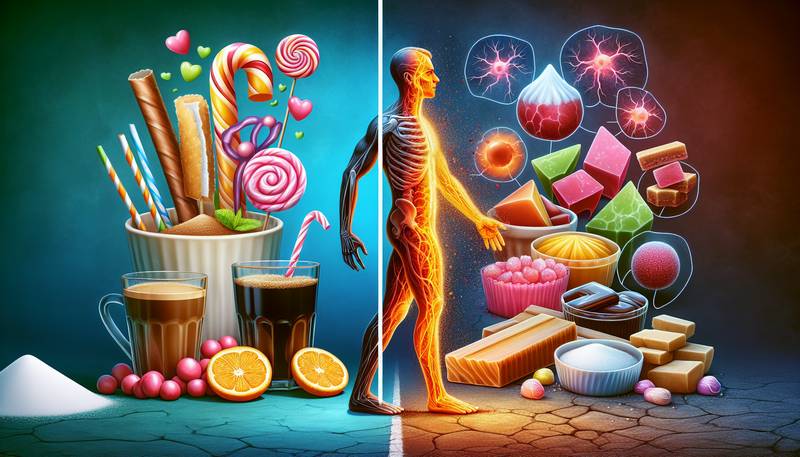Impact of Sugar on Inflammation: Unveiling the Connection

A Sweet DilemmaIn a world filled with endless choices, sugar remains a tempting adversary. From the morning coffee that could double as a dessert to the candy aisle that seems to whisper our names, sugar is everywhere. It’s as if it’s playing a relentless game of hide-and-seek with our better judgment. But while sugar can tickle our taste buds, it also has a darker side—namely, its contribution to inflammation. Think of it as that friend who brings snacks to the party and then, unexpectedly, shows up uninvited to your post-party cleanup.What’s Happening in Your Body?When you consume sugar, it triggers a cascade of events in the body that can lead to inflammation. The sweet stuff gets broken down into glucose, which sparks an increase in insulin production. While insulin is mostly a benevolent hormone, it can get overzealous when fed too much sugar. This excessive insulin can lead to various health issues, including swelling and discomfort in the body. So how does this happen? Sugar can increase the production of certain cytokines, which are proteins that play a role in inflammation. Getting too much of these can feel like being stuck in traffic during rush hour—there's a lot of honking, but no one really gets anywhere. Types of Sugar: Not All Sugar is Created EqualAs it turns out, there are different types of sugars, and not all of them are the same in terms of their effect on inflammation. To better understand, here’s a quick rundown:- Natural Sugars: Found in fruits and vegetables, these are packed with nutrients and tend to be more manageable in moderation.
- Added Sugars: These sneaky devils are often hiding in processed foods and can be the culprits behind inflammation. Think soda, pastries, and those “healthy” granola bars that are basically candy in disguise.
- Refined Sugars: This category includes white sugar and high-fructose corn syrup. These sugars are like that friend who always wants to pick the restaurant—fun at first, but they don’t exactly help your waistline.
How Much Sugar is Too Much?Now that you’re scared to look at your morning coffee, let’s talk numbers. The American Heart Association recommends that men limit their intake of added sugars to about 9 teaspoons (or 36 grams), while women should aim for 6 teaspoons (about 25 grams). Just to clarify, a teaspoon of sugar is like a mini ticket to the sweet side of life, but once you realize how quickly they add up, it’s more like standing at the candy store without a budget.To put it in perspective, a single 12-ounce soda can contain around 10 teaspoons of added sugar. So, if you’re sipping on soft drinks and munching on doughnuts, you might just be on an express train to the inflammation station.Strategies to Keep Inflammation in CheckBalancing your sugar intake doesn’t mean you must abandon sweet treats altogether. It’s all about moderation, like that friend who just needs to stop taking the last slice of pizza at every gathering. Here are some strategies to help keep your body feeling its best:- Read Labels: Familiarize yourself with ingredient lists and nutrition facts. If sugar is one of the first ingredients, put it back on the shelf and walk away.
- Opt for Whole Foods: Fill your plate with fruits, vegetables, and whole grains. These foods naturally contain sugar and come with benefits like fiber and vitamins.
- Stay Hydrated: Sometimes thirst masquerades as hunger. Drinking plenty of water can help reduce cravings for sugary snacks.
When Sweet Meets SourSugar’s impact on inflammation is no joke, but that doesn’t mean you have to banish all sweetness from your life. Finding balance is key, much like trying to balance that delicate plate of cookies while holding a glass of milk. With thoughtful choices and a sprinkle of mindfulness, it’s possible to enjoy the sweet moments while keeping inflammation at bay. Who knew that dodging inflammation could lead to a healthy dose of self-control? One might say that managing sugar intake is just a piece of cake—without the cake, of course!
|
|







